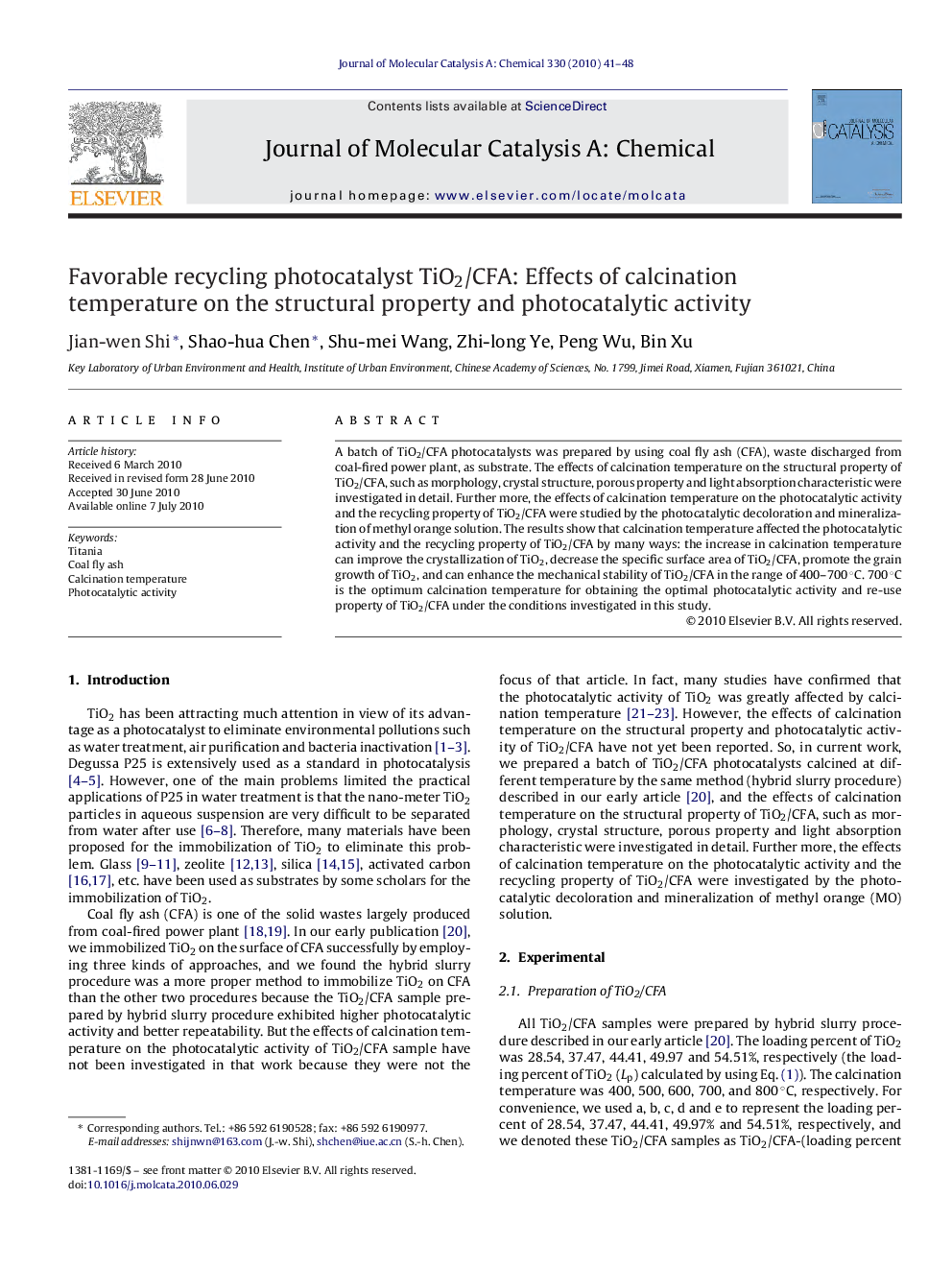| Article ID | Journal | Published Year | Pages | File Type |
|---|---|---|---|---|
| 66545 | Journal of Molecular Catalysis A: Chemical | 2010 | 8 Pages |
A batch of TiO2/CFA photocatalysts was prepared by using coal fly ash (CFA), waste discharged from coal-fired power plant, as substrate. The effects of calcination temperature on the structural property of TiO2/CFA, such as morphology, crystal structure, porous property and light absorption characteristic were investigated in detail. Further more, the effects of calcination temperature on the photocatalytic activity and the recycling property of TiO2/CFA were studied by the photocatalytic decoloration and mineralization of methyl orange solution. The results show that calcination temperature affected the photocatalytic activity and the recycling property of TiO2/CFA by many ways: the increase in calcination temperature can improve the crystallization of TiO2, decrease the specific surface area of TiO2/CFA, promote the grain growth of TiO2, and can enhance the mechanical stability of TiO2/CFA in the range of 400–700 °C. 700 °C is the optimum calcination temperature for obtaining the optimal photocatalytic activity and re-use property of TiO2/CFA under the conditions investigated in this study.
Graphical abstractThe TiO2/CFA-d700 was the optimal photocatalyst among all samples because a high mineralization ratio was always maintained without any decline when it was used repeatedly, even at the sixth cycle.Figure optionsDownload full-size imageDownload high-quality image (260 K)Download as PowerPoint slide
